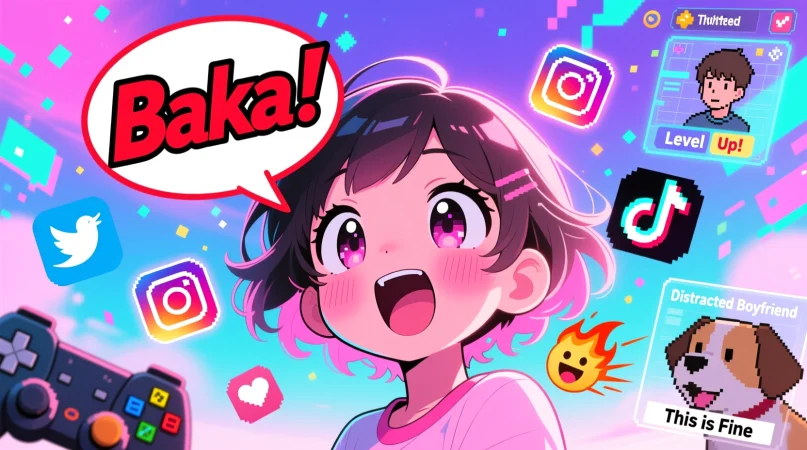Ever been in a chat where someone just types “mhm” and you’re not sure if it means agreement, sarcasm, or something in between?
You’re not alone — this tiny expression carries big meaning. And depending on tone, context, and punctuation, “mhm” can shift from supportive to skeptical in seconds.
This guide breaks down exactly what mhm means, how people use it, when it’s positive vs negative, and how to reply naturally.
Definition & Meaning
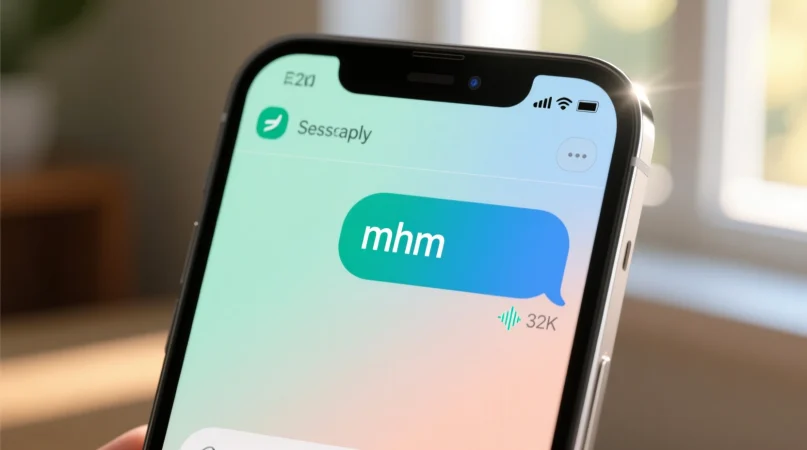
“Mhm” is an informal expression used to show agreement, acknowledgment, confirmation, or attentive listening.
It’s usually pronounced like a soft “mm-hmm” and often appears in:
- casual texting
- voice messages
- conversations where someone wants to show they’re following
- responses that are short but intentional
Core meanings include:
- “Yes.”
- “I agree.”
- “I’m listening.”
- “Got it.”
- “I understand.”
Tone matters — a warm “mhm” shows support; a dry one can show disinterest or doubt.
Background & History
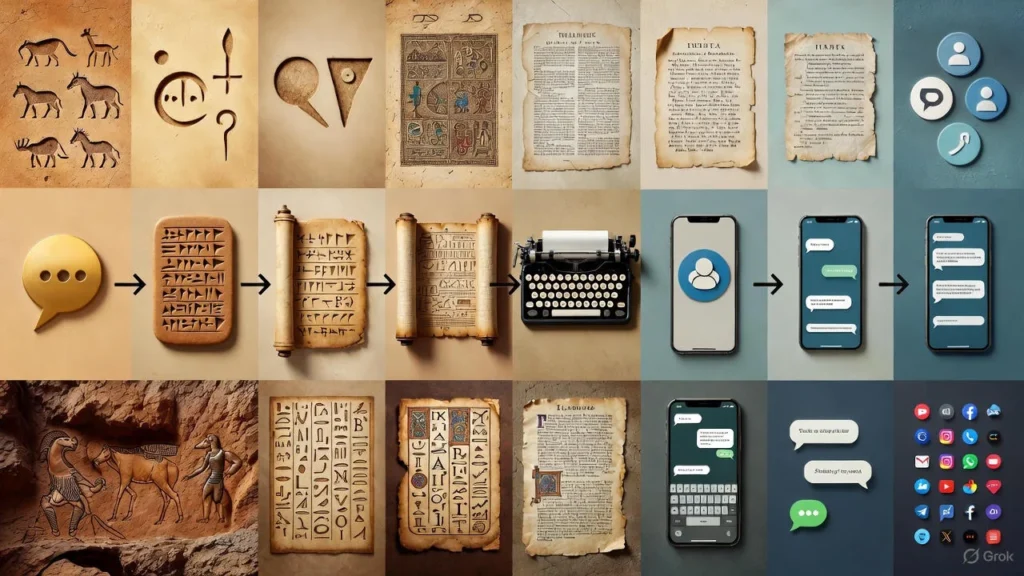
“Mhm” comes from natural human speech sounds — a nonverbal vocalization people make when agreeing or listening.
Over time:
- it became common in English conversations
- transitioned into radio, interviews, and podcasts
- moved into texting and online chats as a typed expression
Today, “mhm” is universal across messaging apps, social media, and real-life conversation.
Usage in Various Contexts

1. Agreement
Someone says something you approve of →
“Mhm, exactly.”
2. Active Listening
Showing you’re paying attention:
“Mhm, I’m following.”
3. Soft Yes
A gentle version of “yes,” often not overly excited.
4. Sarcasm / Doubt
With a flat tone or annoyed vibe:
“Mhm… if you say so.”
5. Dismissiveness
Short “mhm” can mean the person isn’t fully interested.
6. Flirty or Warm Responses
Playful tone:
“Mhm 😏 go on…”
Common Misconceptions & Clarifications
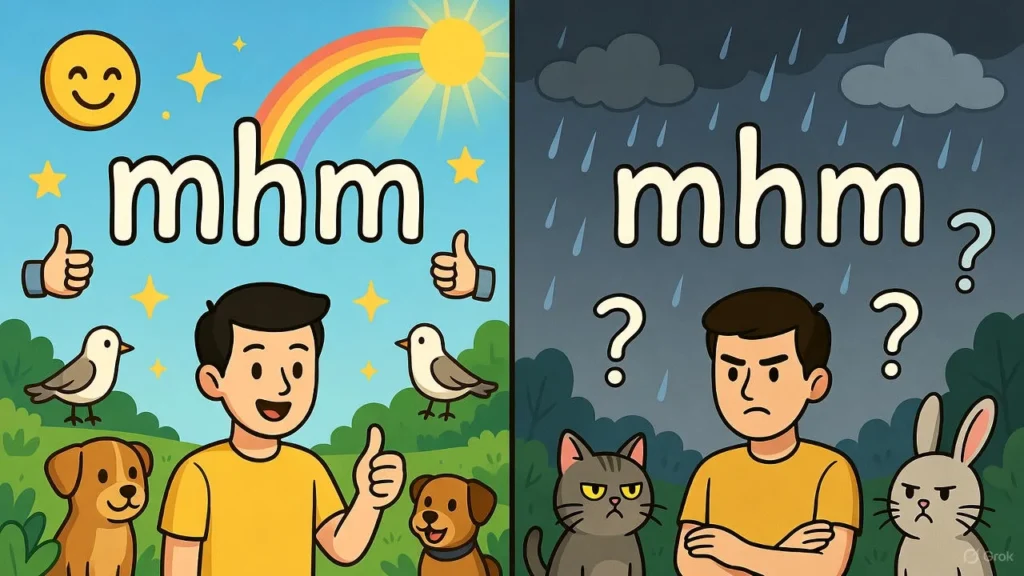
- It’s not always positive. Tone decides whether it’s supportive or skeptical.
- It doesn’t mean a firm “yes.” It’s softer and sometimes vague.
- It’s not rude by default. Many people use it naturally while listening.
- It isn’t the same as “hmm.”
- hmm = thinking
- mhm = agreeing or acknowledging
Similar Terms & Alternatives
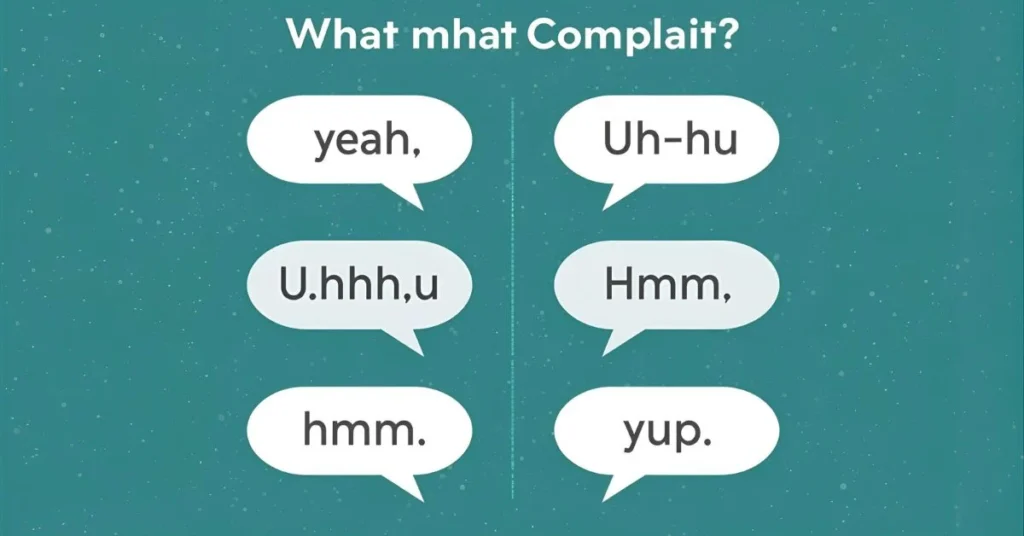
Here are close variations people use:
| Term | Meaning | Similarity |
|---|---|---|
| Mm-hmm | Clear agreement | Very close |
| Yup | Informal yes | Moderate |
| Yeah | Casual yes | Moderate |
| Hmm | Thinking or unsure | Opposite |
| Ohh | Understanding | Related |
| Okay / Ok | Acceptance | Related |
How to Respond to “Mhm”
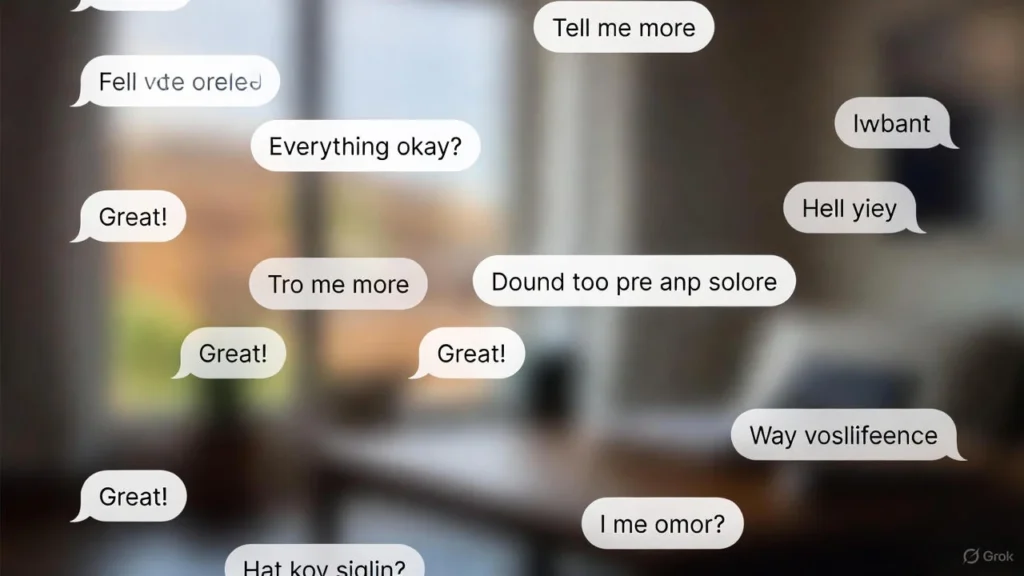
Depending on tone:
If it’s positive
- “Great!”
- “Glad you agree.”
- “Want to continue?”
If it seems doubtful
- “Everything okay?”
- “Do you mean yes or no?”
If it’s dismissive
- “Should we talk later?”
- “Let me know when you’re free.”
If it’s flirty
- “Oh really? 👀”
- “Tell me more.”
Regional or Cultural Differences
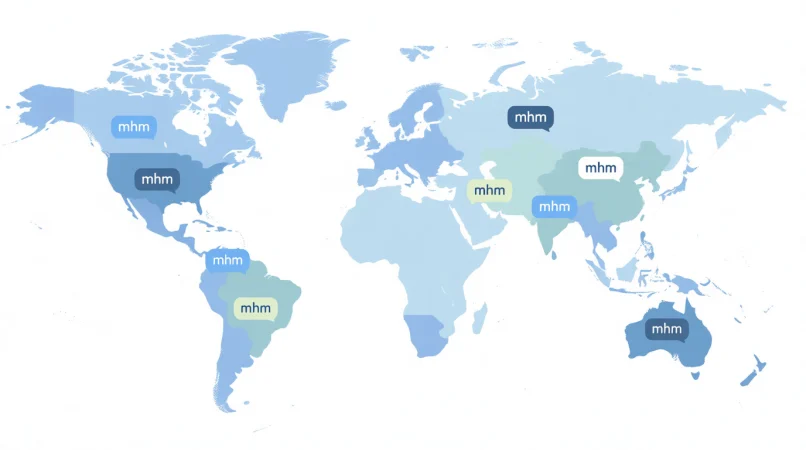
“Mhm” is common in:
- North America
- UK
- Europe
- Online communities worldwide
Some cultures use different versions:
- “Mm.”
- “Uh-huh.”
- “Ya.”
Across most places, it’s universally recognized as an acknowledgment sound.
Comparison With Similar Terms
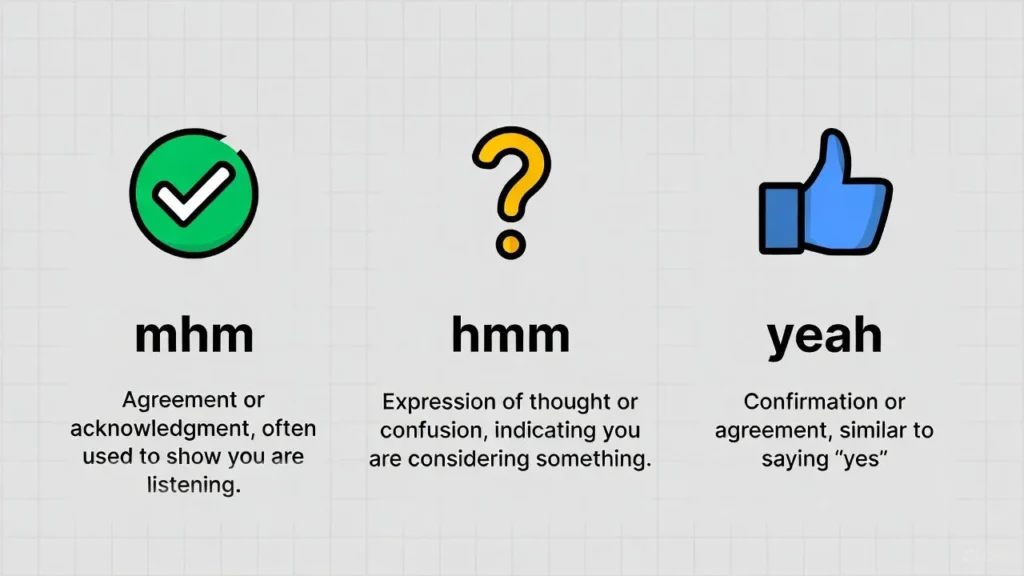
Mhm vs Hmm
- Mhm = agreement
- Hmm = thinking or unsure
Mhm vs Yeah
- Mhm = softer
- Yeah = clearer confirmation
Mhm vs Uh-huh
- Mhm = more neutral
- Uh-huh = direct yes
Usage in Online Communities & Apps

You’ll see “mhm” commonly on:
- Instagram DMs
- TikTok chats
- Reddit threads
- Discord servers
- Voice-to-text transcriptions
People use it when multitasking, listening, or reacting with minimal typing.
Hidden or Subtle Meanings
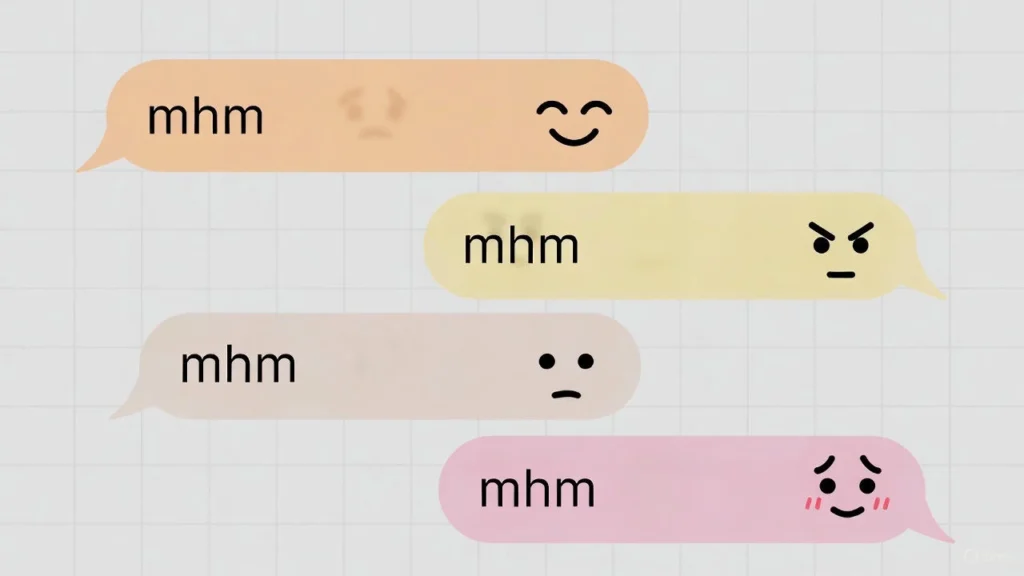
Sometimes, “mhm” carries emotional tone:
- Long “mhm…” → suspicion or disbelief
- Playful “mhm 😌” → flirty vibe
- Short “mhm.” → annoyed or dismissive
- Stretched “mhmmm” → agreement with excitement
Context + relationship matters.
Suitability for Professional Communication
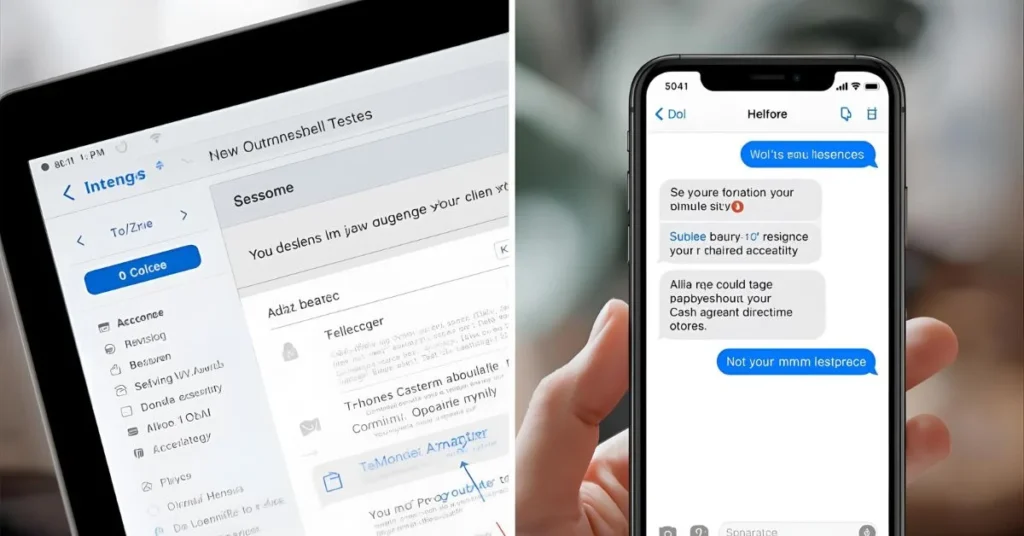
In formal settings, “mhm” is not recommended.
Instead, use:
- “Yes.”
- “I agree.”
- “Understood.”
- “Noted.”
- “I’m listening.”
“Mhm” is best kept for personal and casual conversations.
FAQs
1. Is “mhm” the same as “yes”?
Not exactly — it’s more like a soft acknowledgment.
2. Is “mhm” rude?
Only if used with a cold tone or dismissive intention.
3. Does punctuation change meaning?
Yes — “mhm.” (with period) feels colder; “mhm!!” feels excited.
4. Is “mhm” flirty?
Sometimes, depending on tone and emojis.
5. Can you use “mhm” in professional emails?
Better not — use a formal confirmation instead.
Conclusion
“Mhm” may be small, but it’s one of the most expressive responses in modern communication.
It can show agreement, support, doubt, or attention — all depending on tone and context.
Learning how to read and respond to “mhm” helps you navigate conversations smoothly, If you’re chatting casually, flirting playfully, or interpreting someone’s vibe through text.



